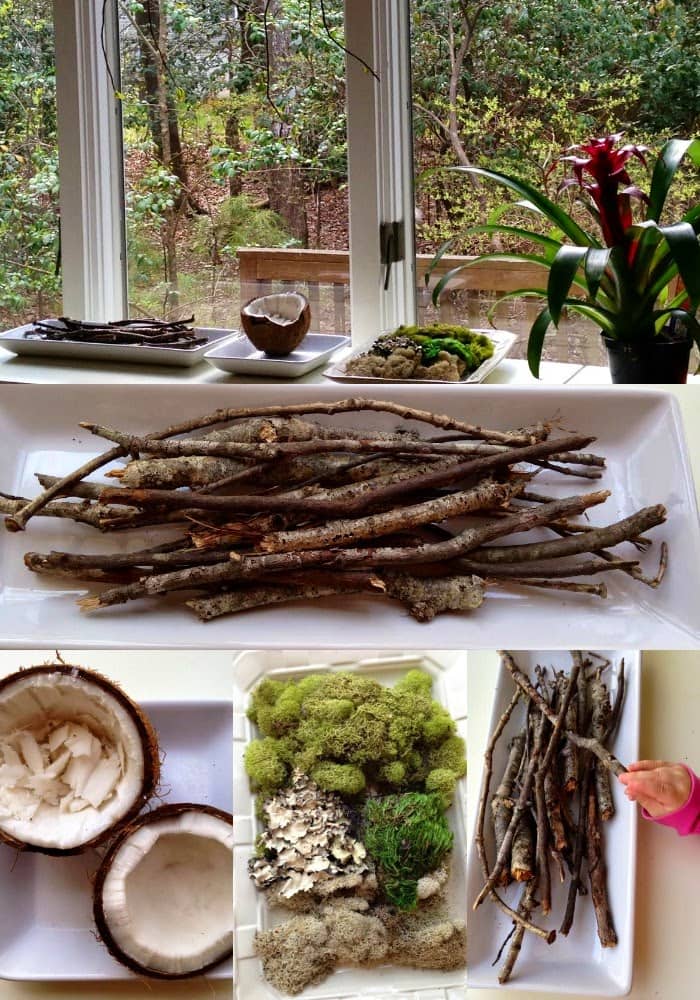Mother Nature’s recent flirtation with Spring-like temperatures in Hampton Roads has got most folks jonesing for warmer weather and all that comes with it. Bright sunny days, time spent outdoors, flowers, green grass, and of course, a springtime nature table for the kids.
A nature table can be anything you want it to be, from simple to elaborate, and provides a devoted indoor space for children to explore and discover natural objects while providing a connection with the natural world. Additionally, there are an array of developmental and mental health benefits that come from children’s exposure to nature tables. The Montessori Philosophy believes a connection to nature is an integral part of a child’s development and learning process and stresses that immersion in nature relates directly to proper physical and psychological development.
Play in natural environments also encourages language and cognitive development, collaborative skills, as well as creativity, and social emotional competence. Additionally, studies have shown that early experiences with the natural world are positively linked with the development of imagination and a sense of wonder within children which fosters lifelong learning. (Ruth Wilson, The Wonders of Nature: Honoring Children’s Ways of Knowing).
Maria Montessori, founder of the Montessori Philosophy, felt that the outdoor environment should be an extension of the classroom, and in turn, that nature should also be present within the classroom. “There must be a provision for the child to have contact with nature; to understand and appreciate the order, the harmony and the beauty in nature,” Montessori said. “It is also necessary for his physical development to place the soul of the child in contact with creation, in order that he may lay up for himself treasure from the directly educating forces of living nature.”
With the increased pace of life in today’s society, demands on children’s time are higher than ever. From academic pressure in school, a variety of extracurricular activities, an increasing presence of technology in the classroom and for entertainment, and a general unease about children playing alone outside, children are spending less time outdoors than ever before. As a result, finding a way to incorporate nature into the indoor environment is essential.
Studies have also shown that exposure to nature can directly benefit children with Attention Deficit Disorder. A study by University of Illinois Researchers Andrea Faber Taylor, Frances Kuo and William Sullivan discovered that some symptoms of children with ADD were relieved following exposure to nature. The study showed that the greener the setting the child interacted with, the more relief, and the children also were shown to perform better on schoolwork following exposure to natural elements. Comparatively, when the same children were exposed to indoor activities such as watching television or spending time outdoors in non-green areas or heavily paved spaces, the children were left with worsened symptoms of ADD. (“Coping with ADD: The Surprising Connection to Green Play Settings.”)
The benefits of exposing children to nature are endless, as are the options when it comes to creating your own nature table (indoors or out!) You can create a table to go along with the current season, or you can select a theme such as colors, textures (soft items, smushy items, prickly finds, smoothe treasures), scents, or shapes. You can devote an entire nature table to a variety of leaves, a collection of rocks, an array of colorful flowers, bark samplings, or even a cluster of sticks. Change up the content of your nature table as often as you like and as often as needed to keep your child’s interest.




